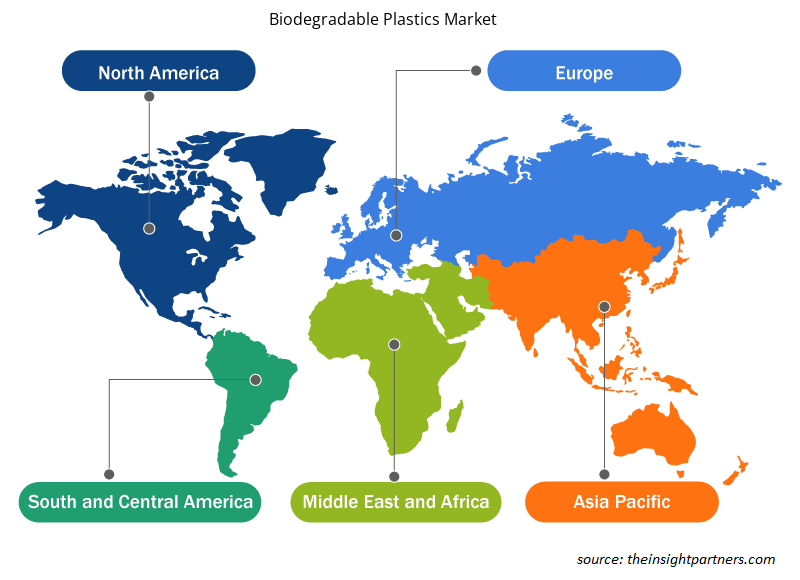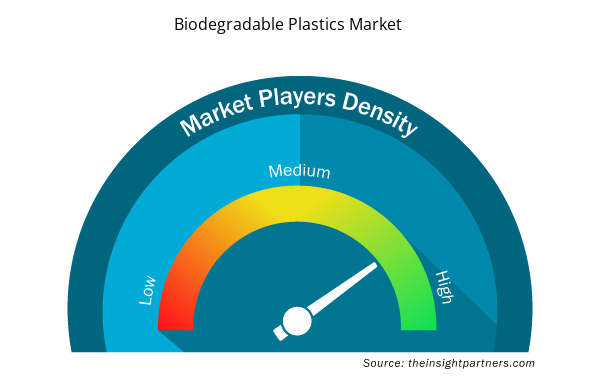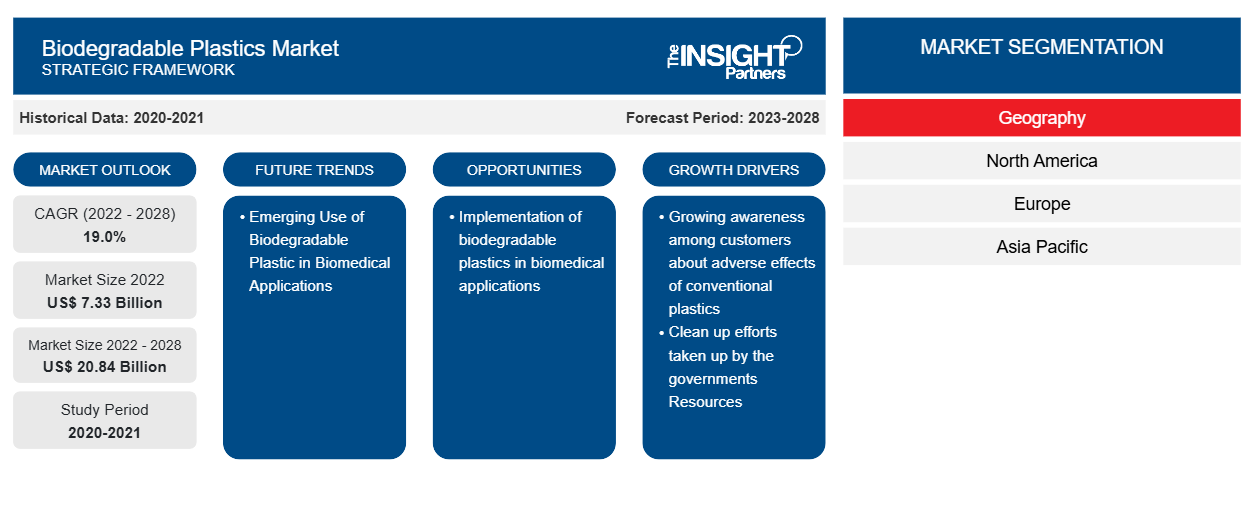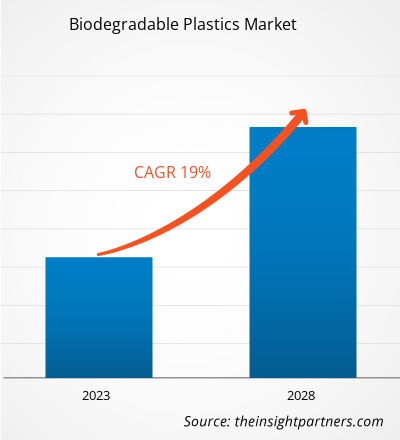[調査レポート] 生分解性プラスチックの市場規模は、2022年の73億3,111万米ドルから2028年には208億4,029万米ドルに成長すると予想されており、2022年から2028年にかけて19.0%のCAGRを記録すると予測されています。
市場分析
生分解性プラスチックは、通常微生物である生物の働きによって、環境中で自然に水、二酸化炭素、バイオマスに分解されます。再生可能な原材料、微生物、石油化学製品を使用して合成できます。これらは、管理された廃棄物管理環境で鉱化するように設計されており、合成ポリマーに代わる効果的で環境に優しい代替品を提供します。世界中の政府機関とメーカーは、プラスチック廃棄物のリサイクルとアップサイクルの効率を向上させるために努力してきました。従来のプラスチックの悪影響に関する顧客の意識の高まりにより、製品の需要が増加すると予想されます。
成長の原動力と課題
先進国と発展途上国の顧客は、従来のプラスチックが自分たちのライフスタイルと環境に与える悪影響について教育を受けています。その結果、より環境に優しい製品を求めるようになり、それが原油と天然ガスの使用減につながり、結果として二酸化炭素排出量の削減につながります。生分解性プラスチックは、さまざまな用途で使用されているほぼすべての従来のプラスチックの代替品です。これらのプラスチックは、従来のプラスチックと同じ品質と機能を提供するだけでなく、排出量を削減する独特の能力に加えて、強化された特性を備えた革新的な代替品を提供します。生分解性プラスチックは、セルロースエステル、PLA、PHA、デンプン誘導体、コポリエステルなどの化石原料だけでなく再生可能資源を使用して合成されます。さまざまな組織が、戦略的計画、コミュニケーション、消費者意識向上キャンペーン、ドキュメンタリー映画、教育、クリーンアップキャンペーン、ビジネス意識の向上、科学研究、起業家の革新、法律、持続可能性を通じて、プラスチックの取り扱いに変革をもたらすことに取り組んでいます。主な目的は、プラスチック汚染に関してユーザーを教育し、より持続可能な解決策の発明を奨励し、より多くの人々や企業組織がプラスチック汚染を阻止するための行動を起こせるようにすることです。したがって、環境意識、パッケージの利便性、持続可能なプラスチック生産システムに基づく消費者需要の革命が、生分解性プラスチック市場の成長を後押ししています。
要件に合わせてレポートをカスタマイズする
このレポートの一部、国レベルの分析、Excelデータパックなど、あらゆるレポートを無料でカスタマイズできます。また、スタートアップや大学向けのお得なオファーや割引もご利用いただけます。
- このレポートの主要な市場動向を入手してください。この無料サンプルには、市場動向から見積もりや予測に至るまでのデータ分析が含まれます。
レポートのセグメンテーションと範囲
「2030 年までの世界の生分解性プラスチック市場分析」は、世界の市場動向と成長機会に重点を置いた専門的で詳細な調査です。このレポートは、タイプ、エンドユーザー、および地域別の詳細な市場区分とともに、世界の市場の概要を提供することを目的としています。世界の生分解性プラスチック市場は、最近高い成長を遂げており、予測期間中もこの傾向が続くと予想されています。このレポートでは、世界の生分解性プラスチックの消費量と、主要地域および国での需要に関する主要な統計を提供します。さらに、レポートでは、主要な地域および国での生分解性プラスチック市場のパフォーマンスに影響を与えるさまざまな要因の定性的な評価を提供します。レポートには、生分解性プラスチック市場の主要プレーヤーと主要な戦略的展開に関する包括的な分析も含まれています。また、主要な推進要因、市場動向、および収益性の高い機会を特定するために役立つ、市場ダイナミクスに関するいくつかの分析も含まれています。
さらに、エコシステム分析とポーターの 5 つの力の分析により、世界の生分解性プラスチック市場の 360 度の視点が得られ、サプライ チェーン全体と市場の成長に影響を与えるさまざまな要因を理解するのに役立ちます。
セグメント分析
世界の生分解性プラスチック市場は、タイプとエンドユーザーに基づいてセグメント化されています。タイプに基づいて、生分解性プラスチック市場は、PLA、PHA、デンプンブレンド、PBS、PBAT、その他に分類されています。エンドユーザーに基づいて、市場は、包装とバッグ、農業と園芸、消費財、その他に分類されています。タイプに基づいて、デンプンブレンドが大きなシェアを占めています。デンプンは、トウモロコシ、米、ジャガイモなどの植物に水不溶性の顆粒の形で存在する天然ポリマーです。従来のフィルム形成樹脂が利用できないため、デンプンはフィルム製造の原料としてますます注目を集めています。ポリヒドロキシアルカン酸(PHA)は、天然ポリマーのファミリーに属します。PHAは、その生体適合性により、医療用途で重要な位置を占めています。優れた紫外線耐性がありますが、酸と塩基に対する耐性が低く、クロロホルムやその他の塩素化炭化水素にも溶けます。 PBS は水と二酸化炭素で自然に分解することが知られています。PBS は包装フィルムや箱の製造のほか、化粧品の包装にも広く使用されています。エンドユーザー別では、包装およびバッグ部門が大きなシェアを占めています。生分解性プラスチックは、従来のプラスチックに比べて引張強度が高く、使いやすいなどの特性があるため、包装およびバッグ部門で重要な位置を占めています。環境に優しい食品包装の需要が急増しているため、重要なポリマー製造業者や包装会社の焦点は分解性プラスチックに移っています。日常生活における持続可能なプラスチックの使用は、玩具、櫛、工具の柄などの消費財の製造にまで及んでいます。PLA および PHA ポリマーは、玩具の製造に幅広く使用されています。イタリアの大手玩具製造会社の 1 つである Italeri は、玩具の製造に PHA および PLA プラスチックを採用しています。
地域分析
このレポートは、北米、ヨーロッパ、アジア太平洋(APAC)、中東およびアフリカ(MEA)、南米および中米の5つの主要地域に関して、世界の生分解性プラスチック市場の詳細な概要を示しています。ヨーロッパは市場の大きなシェアを占め、2022年には26億米ドル以上の価値があるとされています。この優位性は、消費者の間で環境への関心が高まり、環境に優しい性質のために生分解性プラスチックの採用が増えていることに起因しています。さらに、使い捨てプラスチックバンドに課せられた厳しい規制と、リサイクル可能な包装の採用に向けた政府の取り組みが、地域の業界規模を押し上げるでしょう。北米はまた、環境に優しい製品に対する人々の意識の高まりに起因して、2028年に約49億米ドルに相当する大幅な成長が見込まれています。地球温暖化とプラスチック汚染に対する意識の高まりにより、消費者は環境に優しい包装を選択するようになっています。アジア太平洋地域は、20.5%を超えるCAGRで大幅に成長しています。従来のプラスチックの使用禁止の増加が、この市場の成長の主な原動力であることが証明されています。さらに、消費財業界からのフレキシブル包装の需要の高まりと、包装におけるさまざまな技術革新の採用が、この地域の成長を後押しするでしょう。
業界の発展と将来の機会
このレポートでは、北米、ヨーロッパ、アジア太平洋 (APAC)、中東およびアフリカ (MEA)、南米および中米の 5 つの主要地域に関して、世界の生分解性プラスチック市場の詳細な概要を示します。
カネカは2022年に、日本でのカネカ生分解性ポリマー「グリーンプラネット」の生産能力増強に150億円を投資すると発表した。この投資は、生産能力を年間5,000トンから約20,000トンに増やすことを目的としており、2024年1月に稼働を開始する予定である。
2021年、韓国に本拠を置くSKグループは、地元の貿易会社LXインターナショナルおよび食品会社Daesangと戦略的提携を結び、1億5,130万米ドル相当の投資でPBAT生産の合弁会社(JV)を設立すると発表しました。
生分解性プラスチック市場の地域別分析
予測期間を通じて生分解性プラスチック市場に影響を与える地域的な傾向と要因は、Insight Partners のアナリストによって徹底的に説明されています。このセクションでは、北米、ヨーロッパ、アジア太平洋、中東、アフリカ、南米、中米にわたる生分解性プラスチック市場のセグメントと地理についても説明します。

- 生分解性プラスチック市場の地域別データを入手
生分解性プラスチック市場レポートの範囲
| レポート属性 | 詳細 |
|---|---|
| 2022年の市場規模 | 73億3千万米ドル |
| 2028年までの市場規模 | 208.4億米ドル |
| 世界のCAGR(2022年 - 2028年) | 19.0% |
| 履歴データ | 2020-2021 |
| 予測期間 | 2023-2028 |
| 対象地域と国 | 北米
|
| 市場リーダーと主要企業プロフィール |
|
市場プレーヤーの密度:ビジネスダイナミクスへの影響を理解する
生分解性プラスチック市場は、消費者の嗜好の変化、技術の進歩、製品の利点に対する認識の高まりなどの要因により、エンドユーザーの需要が高まり、急速に成長しています。需要が高まるにつれて、企業は提供を拡大し、消費者のニーズを満たすために革新し、新たなトレンドを活用し、市場の成長をさらに促進しています。
市場プレーヤー密度とは、特定の市場または業界内で活動している企業または会社の分布を指します。これは、特定の市場スペースに、その規模または総市場価値と比較して、どれだけの競合相手 (市場プレーヤー) が存在するかを示します。
生分解性プラスチック市場で事業を展開している主要企業は次のとおりです。
- BASF SE
- ノヴァモント SpA
- ネイチャーワークスLLC
- 三菱ケミカル株式会社
- トータルコービオンPLA
免責事項:上記の企業は、特定の順序でランク付けされていません。

- 生分解性プラスチック市場のトップキープレーヤーの概要を入手
COVIDの影響/地政学的シナリオの影響/景気後退の影響
このレポートは、北米、ヨーロッパ、アジア太平洋(APAC)、中東およびアフリカ(MEA)、中南米の5つの主要地域に関して、世界の生分解性プラスチック市場の詳細な概要を提供しています。包装・袋、農業・園芸、消費財、自動車などの業界は、生分解性プラスチックの主な消費者です。2020年、これらの業界は、国境や国境の閉鎖によって引き起こされたバリューチェーンの混乱により、事業を減速せざるを得ませんでした。さらに、さまざまな国が課したロックダウンにより、同年、業界が在庫レベルを維持する能力が妨げられました。パンデミックは、自動車および消費財業界にも大混乱をもたらしました。人手不足により、生分解性プラスチックの生産および流通業務が減速しました。さらに、政府の規制やその他のCOVID-19予防措置により、バリューチェーン内の生分解性プラスチックメーカーの生産能力が低下しました。 2021年、各国政府が社会的制限の緩和を発表したことで、世界市場は2020年に被った損失から回復し始めました。さらに、使い捨てプラスチックに対する政府の禁止が増え、世界各地で農業や食品・飲料包装業界の生産能力が拡大したことにより、2021年には生分解性プラスチックの需要が増加しました。
競争環境と主要企業
生分解性プラスチック市場で活動している主要企業には、BASF SE、FKuR Kunststoff GmbH、Green Dot Bioplastics Inc、Novamont SpA、Kingfa Science and Technology Co Ltd、NatureWorks LLC、三菱ケミカルホールディングス株式会社、Plantic Technologies Ltd、TotalEnergies Corbion BV、API SpA などがあります。
- 過去2年間の分析、基準年、CAGRによる予測(7年間)
- PEST分析とSWOT分析
- 市場規模価値/数量 - 世界、地域、国
- 業界と競争環境
- Excel データセット


- Intraoperative Neuromonitoring Market
- Semiconductor Metrology and Inspection Market
- Biopharmaceutical Contract Manufacturing Market
- Molecular Diagnostics Market
- Aesthetic Medical Devices Market
- Airline Ancillary Services Market
- Third Party Logistics Market
- Thermal Energy Storage Market
- Aerospace Forging Market
- Gas Engine Market

Report Coverage
Revenue forecast, Company Analysis, Industry landscape, Growth factors, and Trends

Segment Covered
This text is related
to segments covered.

Regional Scope
North America, Europe, Asia Pacific, Middle East & Africa, South & Central America

Country Scope
This text is related
to country scope.
よくある質問
Growing awareness among customers about adverse effects of conventional plastics, and supportive government policies for eco-friendly products and biodegradable plastics are some of the key driving factors for the biodegradable plastics market.
Based on the type, the starch blends segment accounted for the largest revenue share. Starch has been receiving growing attention as raw material for the production of films due to the lack of the availability of the conventional film-forming resins. Therefore, this factor is expected to boost the starch blends’ segment, leading to largest revenue share.
The utilization of biodegradable plastics in biomedical applications, is expected to provide lucrative growth opportunities to the global biodegradable plastics market during the forecast period.
The major players operating in the global biodegradable plastics market are BASF SE; Novamont SpA; NatureWorks LLC; Mitsubishi Chemical Corporation; Total Corbion PLA; amongst others.
Europe biodegradable plastics market is expected to surge as strict government legislations are limiting the utilization of customary plastics. Therefore, several FMCG companies are adopting biodegradable packaging so to conform to the standards, which in turn, is propelling the growth of this market. Therefore, Europe accounts for the largest share of the global biodegradable plastics market.
Based on end-user, consumer goods is the fastest-growing segment. The utilization of biodegradable plastics in consumer goods on a large scale globally due to high tensile strength, transparency, and other mechanical properties, is driving the segment’s growth.
Trends and growth analysis reports related to Chemicals and Materials : READ MORE..
The List of Companies - Biodegradable Plastics Market
- BASF SE
- Novamont SpA
- NatureWorks LLC
- Mitsubishi Chemical Corporation
- Total Corbion PLA
- Plantic Technologies Limited
- Kingfa Sci. & Tech. Co., Ltd
- Green Dot Bioplastics
- FKuR Kunststoff GmbH
- API SpA
The Insight Partners performs research in 4 major stages: Data Collection & Secondary Research, Primary Research, Data Analysis and Data Triangulation & Final Review.
- Data Collection and Secondary Research:
As a market research and consulting firm operating from a decade, we have published and advised several client across the globe. First step for any study will start with an assessment of currently available data and insights from existing reports. Further, historical and current market information is collected from Investor Presentations, Annual Reports, SEC Filings, etc., and other information related to company’s performance and market positioning are gathered from Paid Databases (Factiva, Hoovers, and Reuters) and various other publications available in public domain.
Several associations trade associates, technical forums, institutes, societies and organization are accessed to gain technical as well as market related insights through their publications such as research papers, blogs and press releases related to the studies are referred to get cues about the market. Further, white papers, journals, magazines, and other news articles published in last 3 years are scrutinized and analyzed to understand the current market trends.
- Primary Research:
The primarily interview analysis comprise of data obtained from industry participants interview and answers to survey questions gathered by in-house primary team.
For primary research, interviews are conducted with industry experts/CEOs/Marketing Managers/VPs/Subject Matter Experts from both demand and supply side to get a 360-degree view of the market. The primary team conducts several interviews based on the complexity of the markets to understand the various market trends and dynamics which makes research more credible and precise.
A typical research interview fulfils the following functions:
- Provides first-hand information on the market size, market trends, growth trends, competitive landscape, and outlook
- Validates and strengthens in-house secondary research findings
- Develops the analysis team’s expertise and market understanding
Primary research involves email interactions and telephone interviews for each market, category, segment, and sub-segment across geographies. The participants who typically take part in such a process include, but are not limited to:
- Industry participants: VPs, business development managers, market intelligence managers and national sales managers
- Outside experts: Valuation experts, research analysts and key opinion leaders specializing in the electronics and semiconductor industry.
Below is the breakup of our primary respondents by company, designation, and region:

Once we receive the confirmation from primary research sources or primary respondents, we finalize the base year market estimation and forecast the data as per the macroeconomic and microeconomic factors assessed during data collection.
- Data Analysis:
Once data is validated through both secondary as well as primary respondents, we finalize the market estimations by hypothesis formulation and factor analysis at regional and country level.
- Macro-Economic Factor Analysis:
We analyse macroeconomic indicators such the gross domestic product (GDP), increase in the demand for goods and services across industries, technological advancement, regional economic growth, governmental policies, the influence of COVID-19, PEST analysis, and other aspects. This analysis aids in setting benchmarks for various nations/regions and approximating market splits. Additionally, the general trend of the aforementioned components aid in determining the market's development possibilities.
- Country Level Data:
Various factors that are especially aligned to the country are taken into account to determine the market size for a certain area and country, including the presence of vendors, such as headquarters and offices, the country's GDP, demand patterns, and industry growth. To comprehend the market dynamics for the nation, a number of growth variables, inhibitors, application areas, and current market trends are researched. The aforementioned elements aid in determining the country's overall market's growth potential.
- Company Profile:
The “Table of Contents” is formulated by listing and analyzing more than 25 - 30 companies operating in the market ecosystem across geographies. However, we profile only 10 companies as a standard practice in our syndicate reports. These 10 companies comprise leading, emerging, and regional players. Nonetheless, our analysis is not restricted to the 10 listed companies, we also analyze other companies present in the market to develop a holistic view and understand the prevailing trends. The “Company Profiles” section in the report covers key facts, business description, products & services, financial information, SWOT analysis, and key developments. The financial information presented is extracted from the annual reports and official documents of the publicly listed companies. Upon collecting the information for the sections of respective companies, we verify them via various primary sources and then compile the data in respective company profiles. The company level information helps us in deriving the base number as well as in forecasting the market size.
- Developing Base Number:
Aggregation of sales statistics (2020-2022) and macro-economic factor, and other secondary and primary research insights are utilized to arrive at base number and related market shares for 2022. The data gaps are identified in this step and relevant market data is analyzed, collected from paid primary interviews or databases. On finalizing the base year market size, forecasts are developed on the basis of macro-economic, industry and market growth factors and company level analysis.
- Data Triangulation and Final Review:
The market findings and base year market size calculations are validated from supply as well as demand side. Demand side validations are based on macro-economic factor analysis and benchmarks for respective regions and countries. In case of supply side validations, revenues of major companies are estimated (in case not available) based on industry benchmark, approximate number of employees, product portfolio, and primary interviews revenues are gathered. Further revenue from target product/service segment is assessed to avoid overshooting of market statistics. In case of heavy deviations between supply and demand side values, all thes steps are repeated to achieve synchronization.
We follow an iterative model, wherein we share our research findings with Subject Matter Experts (SME’s) and Key Opinion Leaders (KOLs) until consensus view of the market is not formulated – this model negates any drastic deviation in the opinions of experts. Only validated and universally acceptable research findings are quoted in our reports.
We have important check points that we use to validate our research findings – which we call – data triangulation, where we validate the information, we generate from secondary sources with primary interviews and then we re-validate with our internal data bases and Subject matter experts. This comprehensive model enables us to deliver high quality, reliable data in shortest possible time.


 このレポートの無料サンプルを入手する
このレポートの無料サンプルを入手する